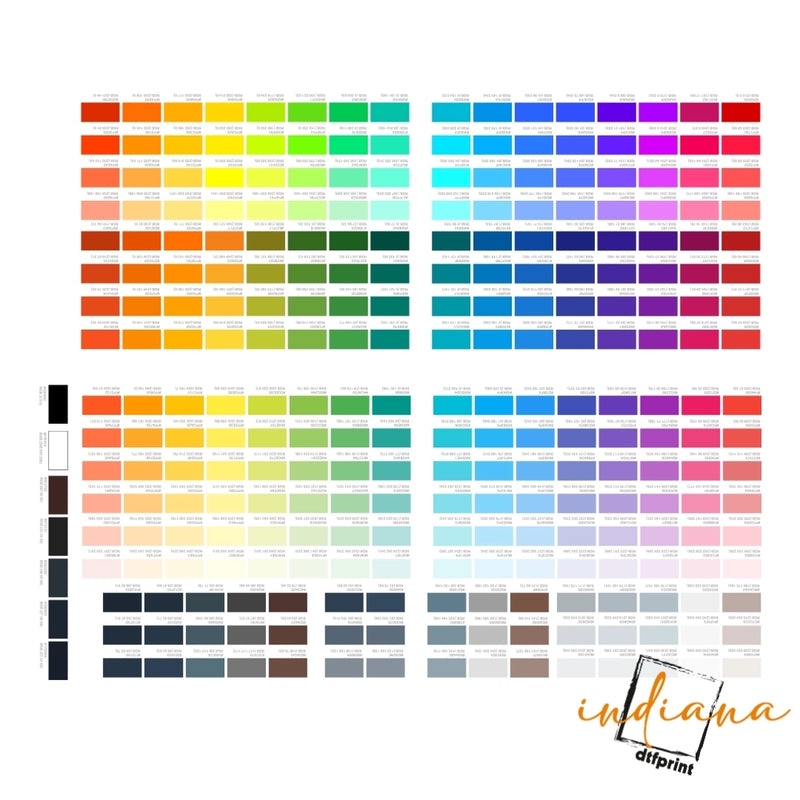When it comes to customizing apparel and accessories, one technology has quickly become a game-changer — Direct-to-Film (DTF) transfers. Whether you’re printing on hoodies, tote bags, t-shirts, or even hats, DTF offers a level of flexibility, quality, and ease that traditional methods just can’t match.
But as with any printing technique, the results depend on knowing what you're working with. Not all materials are the same, and the way you apply DTF transfers on a hoodie might not work as well on a canvas tote or a polyester apron.
In this article, we’ll break down exactly what you need to know about applying DTF transfers to different items — from thick, cozy hoodies to textured tote bags and beyond. This is your no-fluff, real-talk guide to getting the best results every time.
What Makes DTF Transfers So Useful?
Let’s start with why DTF transfers are so popular. Simply put, they’re:
- Flexible: Work on a wide variety of fabrics — cotton, polyester, blends, even canvas.
- Vibrant: The prints are full-color, photo-quality, and sharp.
- Durable: They hold up to washing without cracking or peeling.
- Easy to apply: All you need is a heat press and a few seconds of time.
For small business owners, custom merch sellers, or even hobbyists, DTF is a reliable and cost-effective way to offer premium-looking products with minimal hassle.
Applying DTF Transfers on Hoodies
Hoodies are thicker and bulkier than t-shirts, which means there are a few extra steps to consider.
Key Tips:
- Flatten the print area completely: Make sure seams, zippers, or hoodie pockets aren’t under the press plate. These can cause uneven pressure.
- Use medium to firm pressure: Because hoodies are thicker, light pressure won’t cut it.
- Pre-press the hoodie for 5 seconds to eliminate moisture and wrinkles.
- Use a pressing pillow inside the hoodie if needed — this helps level out the surface for better transfer adhesion.
Whether you're working with cotton fleece or a poly-blend hoodie, DTF transfers will stick beautifully as long as you apply the right technique.
Using DTF on Tote Bags
Tote bags — especially the canvas type — are super popular in the custom merch world. They’re functional, affordable, and people love them for giveaways, branding, and personal gifts.
But canvas behaves differently than t-shirt fabric, so here’s what to keep in mind:
Smart Practices:
- Check fabric texture: Smoother canvas makes for cleaner results. If the weave is too rough, some ink might not stick properly.
- Press on a flat, even surface: Tote bag seams can be thick. Either avoid them or use a pad to offset the pressure.
- Use a cold peel method if your film recommends it. Let the transfer cool before peeling for a crisper design.
Want your logo or custom design to pop on a tote bag? DTF makes it easy — just keep the pressure and temperature consistent.
Other Items DTF Transfers Work On
DTF transfers are incredibly versatile. You can print on a surprising number of products, such as:
- T-shirts (obviously!)
- Sweatshirts and pullovers
- Aprons (great for restaurants and events)
- Pillow covers
- Hats and beanies (with the right press)
- Baby onesies and rompers
- Dog clothing and pet bandanas
If it’s made of fabric and can handle heat, there’s a good chance DTF will work on it. That said, always do a test press on new materials before printing in bulk.
Mistakes to Avoid
Even the best transfers can fail if you overlook the basics. Here are some common missteps to avoid:
- Skipping the pre-press: This step helps remove moisture and flattens the area. It’s quick, and it makes a huge difference.
- Ignoring pressure: Whether you’re using too much or too little, improper pressure can result in patchy, uneven designs.
- Pressing over seams or zippers: These create uneven surfaces that reduce contact between the transfer and fabric.
- Peeling at the wrong time: Follow the peel instructions for your transfer film — hot or cold peel makes a difference.
- Pressing too short or too long: Stick with recommended press times, usually between 10–15 seconds.
Should You Expand Beyond T-Shirts?
If you’re only printing on tees, you’re missing out. Hoodies, tote bags, aprons, and other fabric goods are not only popular — they’re great upsell opportunities for your business.
You can:
- Offer bundle deals (hoodie + tote + tee)
- Sell seasonal items like cozy hoodies in winter
- Create branded merch for local businesses or events
- Increase average order value without extra equipment
And since DTF doesn’t require screens, vinyl, or messy ink setups, adding new product types is quick and easy.
Final Thoughts
DTF transfers are one of the most exciting developments in custom apparel printing. They give creators — from solo printers to growing brands — the power to make bold, vibrant, professional-quality items without expensive equipment or long production times.
Whether you’re customizing hoodies, tote bags, or any other fabric item, knowing how to apply DTF transfers properly will help you deliver better quality, build customer trust, and grow your business faster.
Just remember: preparation and technique matter. Get those right, and the possibilities are endless.











